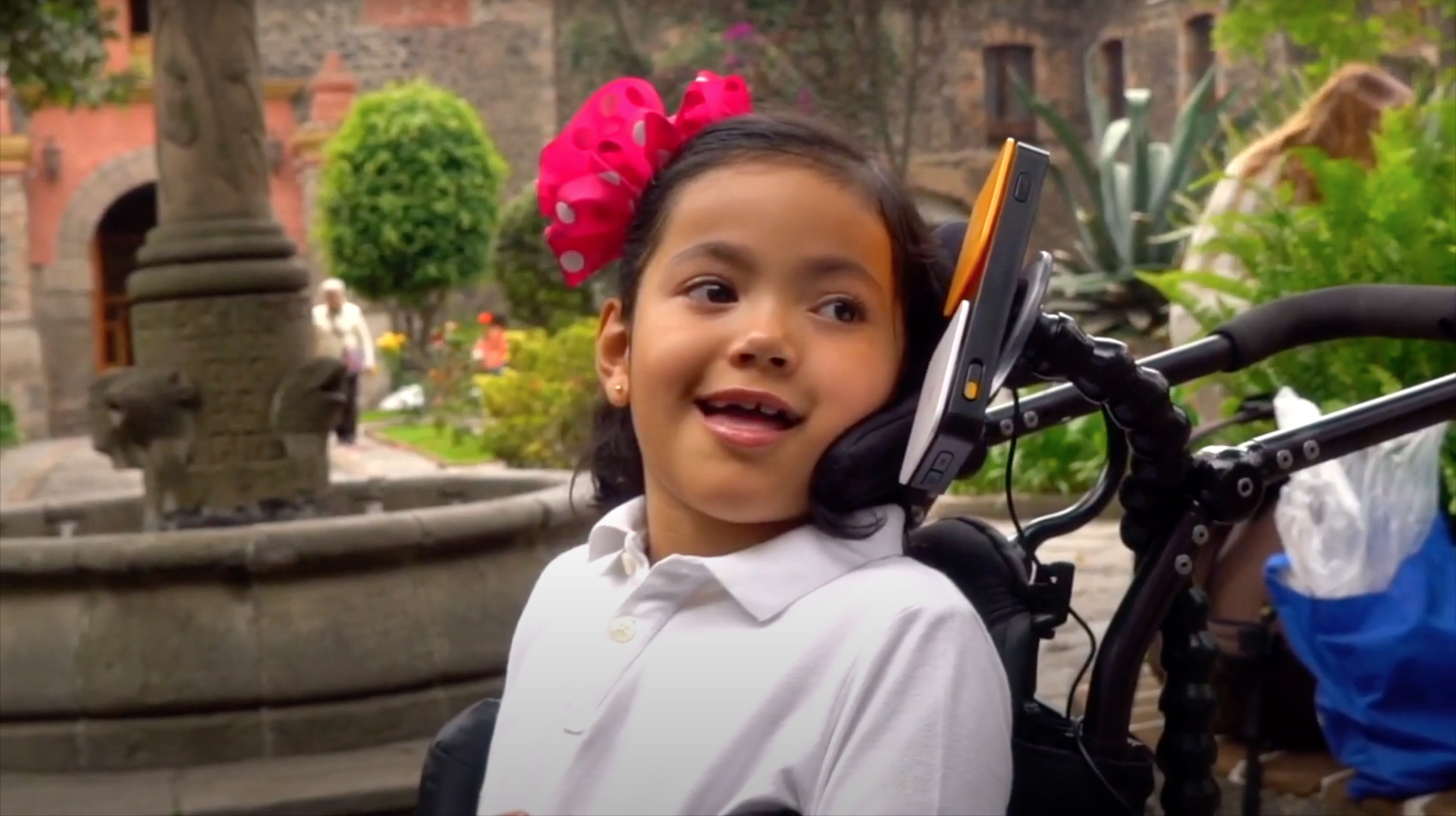Image Caption: A still taken from the ISAAC Cancún 2023 video, available on YouTube
We are delighted to have had two sessions accepted for the conference on augmentative and alternative communication (AAC), ISAAC 2023, being held in Cancún, Mexico in July. Both address a question at the heart of the itDf project:
a 2-hour discussion panel entitled ‘Imagining alternative futures for AAC together – what interactions do we want with each other?’;
a 1-hour interactive workshop entitled ‘Visualising alternative AAC futures: what AAC futures do we want?’ (a separate blog post to follow).
ISAAC (which stands for the International Society for AAC) has chapters in 16 countries or regions around the world. ISAAC members include people who use AAC, their families, therapists, teachers, students, doctors, researchers, organisations and companies that make communication aids. So whilst the conference is a hub for research and practice in the field, it is centred around people who use AAC. And therefore so are our sessions.
Here is the abstract for the discussion panel:
Why isn’t there more discussion of the future of AAC? Perhaps because newspapers herald the advent of brain implants offering ‘speech at the speed of thought’ (a front page story in The Guardian in 2019); meanwhile touchscreens and eye-tracking lock us into screen-based, sender-receiver user interfaces.
Without wishing to reject these dominant narratives, might we still ask:
- is this the future that every augmented communicator wants?
- what about disabled people who don’t see themselves needing to be cured (a reference to the performance poetry of Lateef McLeod) or fixed?
- what voices, identities and cultures are still being left out of AAC?
- how might our starting point be diversity, rather than an ableist assumption that the augmented communicator should conform with nondisabled expectations?
- what could the value be in imagining alternative futures – collaboratively, creatively, critically…?
Our international panel includes six disabled and nondisabled researchers and/or users of AAC. Between them they bring reflections on disabled identities, romantic relationships, expressive voices, interpersonal interactions, and other relevant issues.
Jamie Preece plans to discuss the importance of self-editing and co-editing vocabulary. He is passionate about taking a democratic and creative approach to innovation in AAC, encouraging people to make their own way of doing things. Jamie is already active in the project: we invited him to the itDf screening of ‘Eat Your Catfish’ at the Leeds International Film Festival organised by Stuart Murray and he was part of the post-screening panel discussion chaired by Graham Pullin. And he and Emma Preece continue to work with us as co-researchers (another news post by Fin Tams-Gray to follow).
Darryl Sellwood plans to raise issues at the heart of his own academic research: how might AAC better enable disabled people’s romantic and sexual relationships? Or acknowledge the possibility, importance and diversity of these in the first place?
Kevin Williams plans to expand upon some of the issues that he has discussed online: which voices and identities are being left out of the futures of AAC?
Meredith Allan plans to return to some of the themes of her talk to the United Nations: internationally, AAC devices that can be empowering to some people, in some countries, can be unaffordable to people in emerging nations. Which again questions what we mean by the future of AAC and how inclusive that future is – or how we may need alternative and diverse futures.
Todd Hutchinson plans to raise issues from his own lived experience: including his preference to continue to use his own voice at times, alongside and complementary to the ‘voice’ of his speech generating device – a preference that met with resistance amongst his teachers, for example.
Jeff Higginbotham plans to contribute perspectives from microanalysis of interactions, that can reveal a complex interplay of AAC device, vocalising and gesturing. How might future AAC defer to these, even if it cannot become so transparent so as not to interfere with them? Returning to Preece’s argument for AAC to be shaped by its users, Higginbotham’s group are also part of Project Open, developing open source platforms for AAC.
Their contributions will appropriately be a blend of pre-prepared contributions, pre-recorded conversations, pre-submitted questions from the audience and spontaneous discussion. itDf’s Graham Pullin will convene the session, building on experience of mediating new conversations between healthcare, disability and culture.
These themes may evolve and will combine, in our pre-recorded and live conversations.
We hope to attract a broad audience of people who use AAC, families, therapists and researchers: people invested in the possible futures of AAC and who want to help frame the discussion around these.

